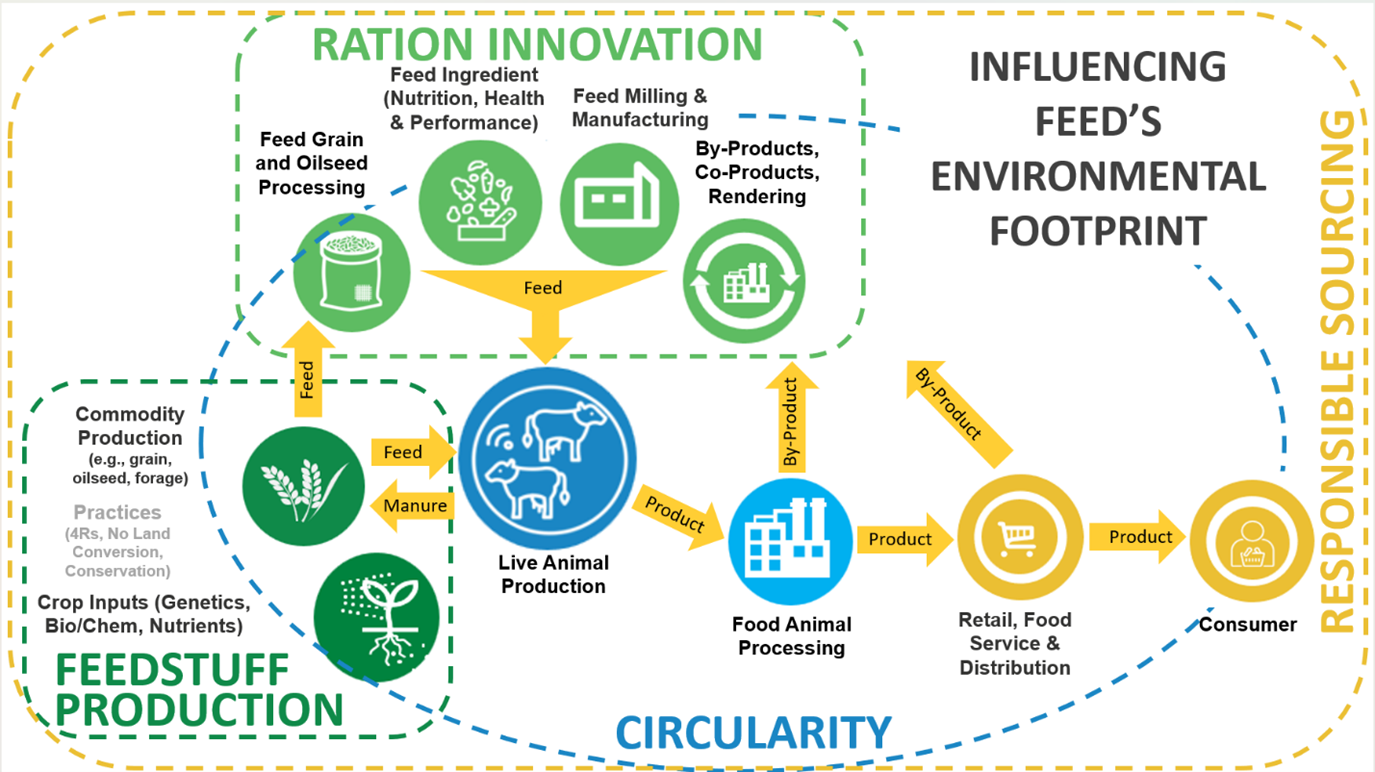Ration Innovation: A Path to Reducing the Environmental Footprint of Animal Production and Pets
Written by: Lara Moody | October 25, 2024
The animal food industry has an opportunity to support our customers with their environmental goals. Input from 11 U.S. and Canadian organizations representing those customers helped the Institute for Feed Education and Research (IFEEDER) identify metrics of interest relative to greenhouse gas emissions, water quality, water quantity and land and marine resource use. Collectively, those metrics provide insights into an aim to reduce their environmental footprint (learn more about those metrics in my previous blog).
Broadly, there are four ways animal feed and pet food can help reduce the environmental footprint of domestic livestock and pets:
-
feedstuff production (practices implemented in the cropping system),
-
ration innovation (ingredients, additives, or ration strategies to improve performance),
-
Circularity (utilization of recovered or co-produced ingredients), and
-
responsible sourcing (intentional decisions about product selection).

The focus of IFEEDER’s recently released resources, added to the sustainability toolkit, is ration innovation. Specifically, IFEEDER developed a database of over 300 articles linked to formula optimization, amino acids, enzymes, eubiotics, proteins and lipids. Using the database, common performance metrics were mapped to potential environmental footprint reduction.
For example, feeding a protected organic acid blend including benzoic acid increased piglets’ average daily gain (ADG) by 4.5% and decreased the feed to gain (F:G) ratio by 5%. In most cases, e. coli levels were also reduced, and beneficial bacteria growth encouraged.
Improved ADG reduces the number of days that farmers need to use inputs to grow their livestock, since livestock can reach their ideal weight faster, leading to fewer tons of feed needed, which also reduces energy usage and emissions. Similarly, F:G ratio improvement can reduce the amount of feed needed per pound of body weight; and fewer tons of feed may be needed to reach ideal weight, which can also lead to a reduced impact on energy usage and emissions.
IFEEDER identified many potential ration innovation outcomes within the sustainability toolkit. Have you considered how the ingredients or additives you supply or utilize can help reduce the footprint of feed for our animal and pet food customers? Are you collecting the data needed in supporting research activities to be able to quantify it?
The resources described above can be found in the sustainability toolkit with the following titles:
- 8a.1_Literature Database – Landscape Assessment of Animal Performance Metrics
- 8a.2_Considering Animal Performance Metrics for Environmental Footprint Reduction
- 8a.3_Considering Animal Performance Metrics for Environmental Footprint Reduction
IFEEDER’s Animal Food Industry Sustainability Toolkit is available as a free resource for American Feed Industry Association (AFIA) members and IFEEDER donors, and available for purchase to all animal food industry stakeholders. Check it out>>